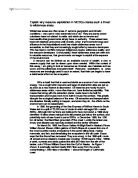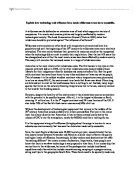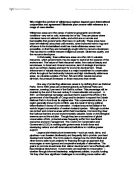In 1996, the grounding of the Sea Empress off Milford Haven in South Wales led to a spill of 72,000 tons of crude oil which damaged 36 coastal SSSIs. Although bird numbers are believed to have recovered, a 1999 study identified 16 sites where residual oil is still present just below the surface, and potentially toxic oil was found in some SSSIs. In December 1999, the 1500 ton oil tanker, the Blackfriars grounded off the coast. Luckily the tanker was empty and disaster was narrowly avoided and the tanker refloated.
On March 24, 1989, the Exxon Valdez hit Bligh Reef in Alaska's Prince William Sound. Eleven million gallons of North Slope oil spewed into one of the most bountiful marine ecosystems in the world, killing birds, marine mammals, and fish, and devastating the ecosystem in the oil's path. Exxon says that the Sound has recovered. They are wrong. In the 1989 spill, crude oil spread across Alaska's coastal seas covering 10,000 square miles. Within a week, currents and winds pushed the slick 90 miles from the site of the tanker, out of Prince William Sound into the Gulf of Alaska. As Figure 1 shows, it eventually reached nearly 600 miles away from the wreck, contaminating 1,500 miles of shoreline -- about the length of California's coast.
Before the Exxon Valdez spill, conservationists warned about the potential impacts of a major spill. In fact, just hours before the disaster, a group of Valdez residents had gathered at the city council chambers to discuss the impact of oil on their community. When the conversation turned to response to a major spill, Riki Ott, a fisherwoman and toxicologist from Cordova said, "It's not a matter of what if, but when." The Exxon Valdez disaster killed more wildlife than any other environmental disaster in the nation's history, including an estimated 3,500 to 5,500 sea otters, 300 harbour seals, and 14 to 22 killer whales. "The Exxon Valdez spill killed nearly ten times as many birds as any other U.S. or European oil spill," said seabird expert Dr. Michael Fry. As many as half a million birds died, including bald eagles, harlequin ducks, marbled murrelets and loons. Critical spawning and rearing habitats, including over 100 salmon streams, were besieged in oil. In 1993, there was an unprecedented crash of the sound's Pacific herring population. The spill also caused a noticeable decline in pink and churn salmon, cutthroat trout and rockfish. Three national parks, three national wildlife refuges, one national forest and designated wilderness areas were oiled. To the naked eye, Prince William Sound may appear "normal." But if you look just beneath the surface, oil continues to contaminate beaches, national parks, and designated wilderness. In fact, the Office of Technology Assessment estimated that beach cleanup and oil skimming only recovered 3-4% of the Exxon Valdez spill. A decade later, the ecosystem still suffers. Substantial contamination of mussel beds persists, contributing to the decline of harlequin ducks. The depressed population of Pacific herring -- a critical source of food for over 40 predators including seabirds, harbour seals and Stellar sea lions -- is having severe impacts up the food chain. Recent studies revealed that even on "cleaned-up" washed beaches, molluscs and other invertebrates were far less abundant than on comparable unspoiled beaches. Wildlife population declines continue for harbour seals, killer whales, harlequin ducks, common loons, pigeon guillemots, red-faced cormorants, and double-crested cormorants. Even before the spill, scientists knew a drop of oil could kill a bird's egg. However, after studying the impact of the Valdez spill, they now believe oil pollution to be at least 100 times more toxic to fish. It is also more persistent. New studies by the National Marine Fisheries Service show that even very low levels of weathered Exxon Valdez oil are toxic to the early life stages of salmon and herring. The Exxon Valdez spill resulted in profound physiological effects to fish and wildlife. These included reproductive failure, genetic damage, curved spines, lowered growth and body weights, altered feeding habits, reduced egg volume, liver damage, eye tumours, and debilitating brain lesions.
Iceland is one of the most thermally active countries in the world. Since the 1920s, hot waters have been used to heat greenhouses used to grow food that could not be cultivated in Iceland's inhospitable climate. By 1980, almost 10,000 MW were under cultivation in Iceland in geothermally heated greenhouses. It is costs a minimum of $ 1 million to drill a geothermal well, and in order for the investment to be economically viable it must provide geothermal emissions for 20 to 30 years after the initial testing. No trade restrictions currently exist on geothermal power production. However, grant, aid, and loan agreements have been promoted because geothermal electrical power generation is considered more "environmentally friendly", because it can be less ecologically harmful than the mining and burning of fossil fuels.
Despite its "environmentally friendly" image, geothermal power contributes to ecological degradation on site as well as globally. When a large volume of fluid is removed from an underground reservoir and is not replaced, the weight of the overburden may be reflected in the subsidence of the land surface above it. Carbon Dioxide and Hydrogen Sulphide are the most prevalent emissions from geothermal wells. Of the non-condensable gases, carbon dioxide always forms by far the largest component - from 63% to 97% by weight - with hydrogen sulphide usually as the next largest ingredient - from 1% to 21%. Other environmentally harmful elements, like mercury, boron, ammonia, arsenic compounds, and radioactive elements, comprise a small but significant part of the geothermal emissions. The noise associated with geothermal mining and running machinery can also be a nuisance, and the dumping of waste water brine into seas and waterways can be attributed with changing the ecology of aquatic life.
As well as being of important cultural value, these wilderness areas are also of significant ecological value, and must be conserved. We must recognize that biological diversity is by no means evenly distributed over the surface of our planet, and that much of it is concentrated in a relatively few biologically rich regions that are often under severe threat. Clear priorities for conservation action in these regions must therefore be set. To be successful, strong partnerships must be established within the conservation community, the indigenous communities and the private sector.







